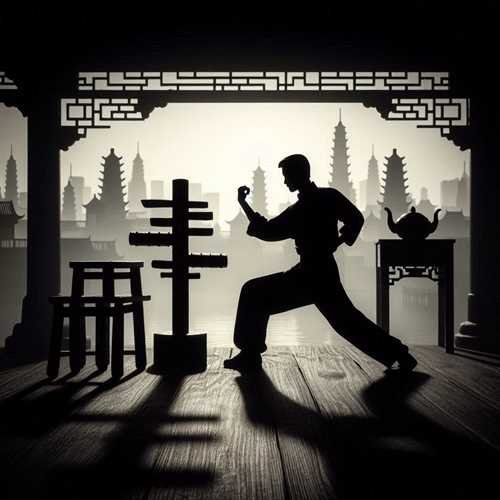Wing Chun: The Martial Art Style of Ip Man

Philosophy of Wing Chun
Wing Chun is a Chinese martial art that emphasizes efficiency, simplicity, and practicality in combat. It is designed for close-quarters fighting, utilizing direct movements to conserve energy and neutralize opponents. Rather than depending on brute force, Wing Chun prioritizes technique, balance, and timing, making it accessible to practitioners of various sizes and strength levels. Core to Wing Chun is the belief in "softness" overcoming "hardness"—using an opponent's force against them. This philosophy teaches practitioners to stay relaxed and responsive, an approach that fosters heightened sensitivity to their opponent’s actions and allows rapid, effective responses.
Core Techniques
The techniques of Wing Chun are based on the economy of movement and a simultaneous focus on offense and defense. Core concepts include:
- Centerline Theory: A foundational Wing Chun principle that emphasizes the protection of the body's centerline, an imaginary line running vertically through the torso. Controlling this line minimizes vulnerability to attacks while maximizing striking efficiency.
- Chain Punching: A rapid series of straight punches aimed at the opponent’s centerline, allowing for maximum impact and minimal response time. This technique is often used in combination with footwork to close the distance between practitioners and opponents.
- Chi Sao (Sticking Hands): A training exercise unique to Wing Chun, Chi Sao develops tactile sensitivity, allowing practitioners to "stick" to their opponent's arms and feel their movements. This reflexive skill allows practitioners to counter opponents even before they visually detect their actions.
Forms of Wing Chun
Wing Chun training is structured around three core empty-hand forms, each building upon the last to develop a comprehensive skill set:
- Siu Nim Tao (Little Idea): This introductory form establishes the foundation for Wing Chun techniques, teaching stance, balance, hand techniques, and the importance of relaxation. Practitioners learn the principles of centerline control and straight-line striking.
- Chum Kiu (Seeking the Bridge): Introducing dynamic movement and bridging techniques, Chum Kiu trains practitioners to approach and control their opponent’s centerline while coordinating footwork and hand techniques. It emphasizes the importance of balance and body mechanics in combat.
- Biu Jee (Thrusting Fingers): The advanced form in Wing Chun, Biu Jee, incorporates emergency techniques and aggressive tactics for recovering control in a fight. This form includes specialized strikes, finger thrusts, and footwork adjustments, providing practitioners with tools for situations when they lose balance or are forced into disadvantageous positions.
Wing Chun Weapons
Wing Chun traditionally includes two specialized weapons training forms, which aim to enhance a practitioner’s empty-hand techniques and overall understanding of range and timing:
- Butterfly Swords (Bart Cham Dao): These short, double-edged swords are used in close-range combat, developing coordination, precision, and power. Training with the swords enhances strength, footwork, and the ability to move fluidly within confined spaces.
- Long Pole (Luk Dim Boon Gwun): The long staff trains practitioners in power generation, alignment, and control over extended range. Known for its focus on stability and precise movement, this weapon form enhances the practitioner’s balance, rooted stances, and understanding of reach.
Practical Application and Self-Defense
Wing Chun’s practicality is one of its strongest assets, making it a highly effective self-defense system. Its techniques are well-suited for real-world encounters, emphasizing quick and minimalistic movements to neutralize threats efficiently. Practitioners are taught to remain calm, relaxed, and focused, utilizing controlled aggression when needed to counter an opponent’s actions while maintaining their own energy. Techniques like trapping, redirecting force, and simultaneous attack and defense provide a well-rounded skill set for various real-life situations.
Impact on Modern Martial Arts
Wing Chun’s influence extends beyond traditional martial arts, thanks largely to Ip Man and his students, including Bruce Lee. Bruce, inspired by Wing Chun’s emphasis on simplicity, efficiency, and directness, integrated these principles into his own martial philosophy, Jeet Kune Do. Wing Chun’s concepts have permeated various martial arts disciplines and continue to influence combat sports, self-defense, and even military training worldwide. The style's adaptable approach to training and emphasis on mental discipline make it a valuable practice not only for self-defense but for personal development.